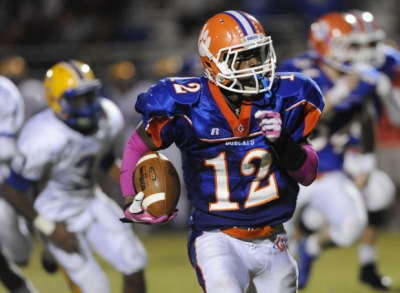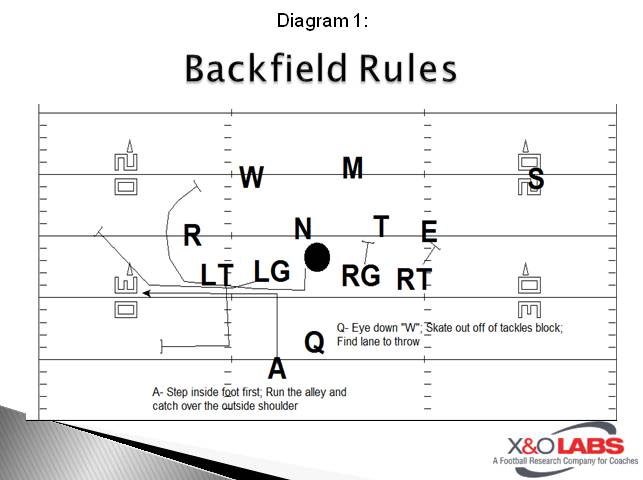By Kevin Wallace
Offensive Coordinator
R.B. Glenn High School (Kernersville, NC)
Twitter: @KRWallaceFb
Introduction:
 Our tailback screen has proven to be one of our most efficient and explosive plays over the past 4 years. This past season, we averaged an explosive play (16+ yards) 20% of the time that we ran this play. As a result, this has been a staple in our offense.
Our tailback screen has proven to be one of our most efficient and explosive plays over the past 4 years. This past season, we averaged an explosive play (16+ yards) 20% of the time that we ran this play. As a result, this has been a staple in our offense.
We use screen plays on any down and anywhere on the field. It is also used as part on an RPO, or more accurately, a Pass-Pass Option play. Our no-huddle, up-tempo style of offense benefits tremendously from the running back screen game and the PPO off of it.
Screen Rules
Our offense is mainly a 10 and 11 personnel based offense that adapts to our talent from year to year. We practice screens in a half-line version during the in-season every day. These screens are paired with our smoke and bubble screens, which we tag to nearly 95% of our run plays.
This is not a slow screen to the running back. We want the running back to align behind the play side guard. On the snap, the running back will take 3 steps forward stepping with his inside foot first. As he moves forward, his eyes are focused on the play side guard’s backside. This should put the running back about 2-3 yards behind the line of scrimmage. When the play side guard releases, the running back will turn and run to the sideline and catch the ball over his outside shoulder. He will then read off his blocks.
We will mix up the back’s alignment during the season and put the running back opposite the call side to break tendencies. Each year, we start by installing this screen out of a 2 x 2 set (usually run to the field). From there, we install it out of our 3 x 1 formation that we run a lot in the red zone and on the goal line.

Once the quarterback takes the snap, he will eye down the first linebacker inside the box to the play side. The quarterback will “skate out” depending on the block of the playside tackle. He is looking to find a path to deliver the football to the running back. This path could be under the or over the top of the tackle. We teach the quarterback to run to the sideline until he has a clear path to deliver the football to the running back. We emphasize to “never throw over a defensive player.”
We talk about finding the hole to throw, we compare it to a hockey player taking a penalty shot. The farther away the player is from the target, the less room it looks like to score in hockey. It looks like the goalie is taking up the entire goal. This is similar to dropping back away from the defensive end. The defensive end looks like he is taking up all the windows for the quarterback to deliver the football. Instead, we want the quarterback to find a lane and deliver the ball to the running back. There are times that the quarterback will run and deliver the football to the running back near the sidelines. We coach the quarterback to not throw the ball away until he is near the sideline.
Blocking the RB Screen
Our most inside wide receiver will crack the first linebacker in the box. Ideally, we want him to decleat the linebacker and make a momentum changing hit. We give him a right to miss. Any other playside wide receiver will stalk block the defensive back or run off vs. man coverage. The backside most inside wide receiver or tight end, has the “Touchdown Block.” He must go attack the play side safety. This is a long developing block and occurs around 25-35 yards downfield on the opposite numbers.









